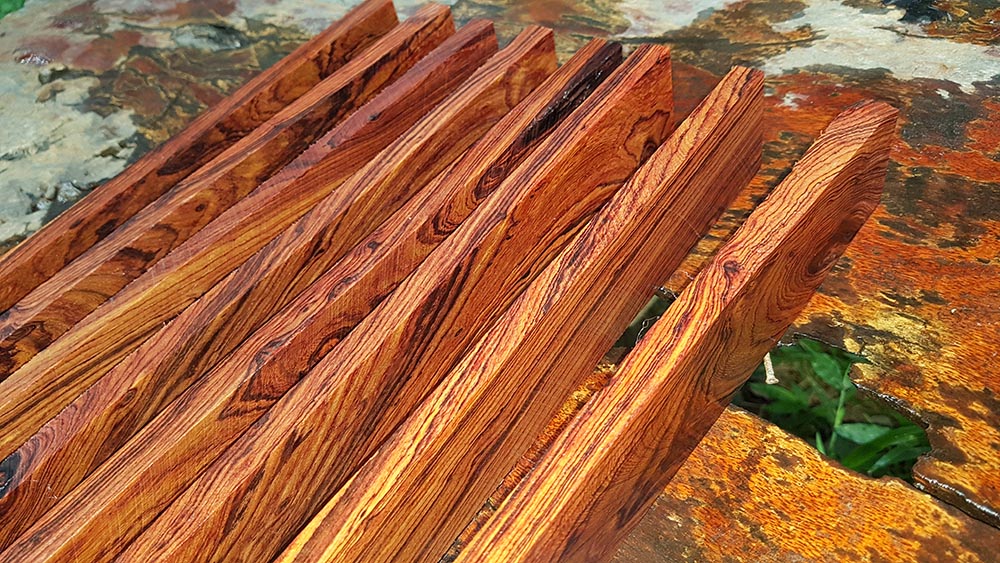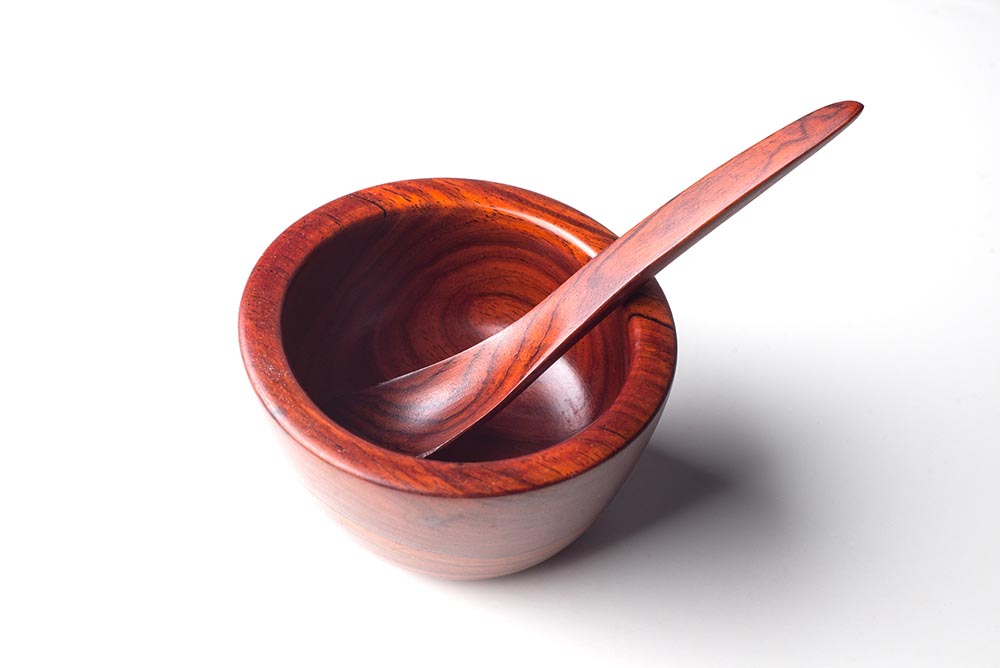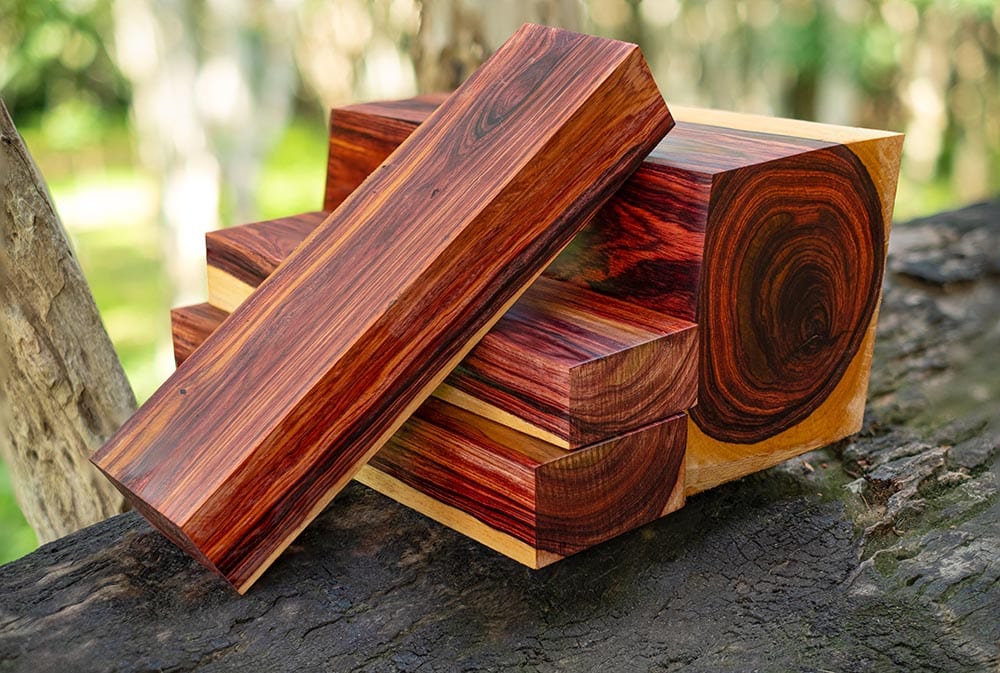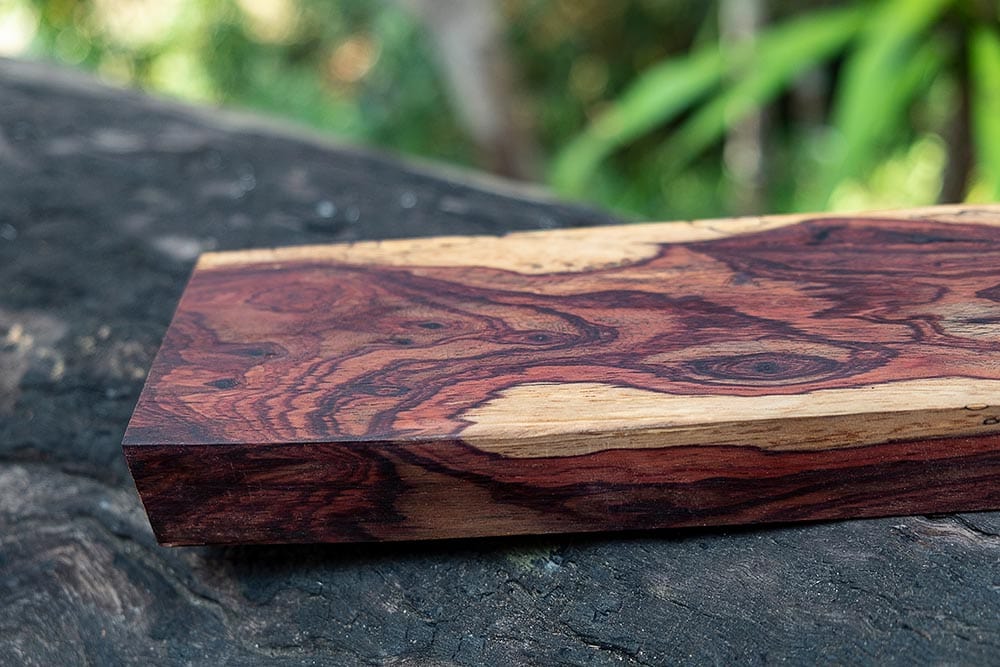What is Cocobolo Wood? Properties, Characteristics, & Uses
-
Kristin Hitchcock
- Last updated:

Cocobolo is a hardwood that comes from a species of trees in Central America. Typically, only the heartwood of this tree is used, which is well-known for its orange and red coloration. Often, there are irregular patterns throughout the wood, adding plenty of interest and variability.
While this wood is beautiful, it is not suitable for all situations. Below, we’ll take an in-depth look at this wood so that you can decide if it is suitable for your home.
Cocobolo Properties

This wood is best known for its strong and durable nature. It tends to last longer than other types of wood out there. For this reason, it is a suitable choice for areas that receive a lot of traffic. It ranges in color from dark red to vibrant red so you can find a range of colors to fit your home. While many people worry that they must choose a very red coloration, this isn’t the case. Many dark, more subtle colors are available.
With an irregular grain pattern, this wood holds a lot of interest. It can easily become the focal point of a room, and it appears more luxurious.
On top of being used as a decorative piece in homes, cocobolo is well-loved by many carpenters. It has wonderful working characteristics, making it a good choice for turning and carving. Plus, it finishes very smoothly and has a wonderful coloration.
Price
There are very few of these trees around and lumber is hard to harvest. Therefore, this wood tends to be extremely expensive. There is only a small amount available at any one time, and the beautiful nature of this wood makes it highly sought after. In many cases, you cannot even get your hands on this wood unless you know who to talk to.
For this reason, the price is extremely steep. You’re going to pay far more for this wood than for others out there. Prepare accordingly.
Uses
This wood is extremely durable and has some water-resistant qualities. Therefore, it is typically used for items that will see heavy use and some moisture, such as duck calls, knife handles, and gun grips. You rarely see this wood used in larger projects, since it is so expensive.
This wood is extremely hard and fine-textured. Many love its appearance. However, it is also easily machined. Therefore, you’re paying mostly for the wood on these smaller projects, not the work that went into the wood.
With that said, this wood does contain a lot of oil. Therefore, it can clog abrasives and fine-toothed saws. Carpenters have to know how to approach this wood, or they can have some difficulties. Luckily, this wood is so expensive that only the very experienced tend to work with it, anyway. This is not a wood that beginning carpenters order, so all projects done in this wood are typically high-quality.
Often, this wood is utilized in custom work. It is not usually mass-produced, as it is very expensive. You’ll find it turned into bowls, jewelry boxes, and pipes.

Musical Instruments
Cocobolo is a very dense wood. Therefore, it will produce a clear tone if it is struck. Usually, this tone is described as “warm” and “rich”. For this reason, cocobolo is often utilized in the making of musical instruments. It is one of the most common woods for boutique B-flat clarinets. You can even find it used in bagpipes.
Making musical instruments may be this wood’s higher purpose. However, this wood is so expensive that it typically isn’t used in lower-quality instruments.
Oil Content
This wood is extremely oily, like most tropical hardwoods. It has a very floral scent, even if it was harvested a long time ago. In many cases, it will stain your hands after prolonged exposure, especially when the wood is new. Therefore, it is difficult to glue this wood to surfaces, as the oil counteracts the glue. It cannot be used in all projects, therefore.
The oil also prevents many different finishes. For instance, it prevents curing, especially oil-based finishes. You can use acetone to remove the oil before gluing or finishing, though this does add an extra step to the process.
This oil is not terribly safe, either. If it is inhaled, it can cause an allergic reaction. Sometimes, people are sensitive to it, which can lead to allergic reactions if they come into contact with the oil. Therefore, protective equipment is recommended when working with this wood.

Conservation
Sadly, because this wood is so highly-priced, it is also overharvested. Older trees are typically more difficult to get to, hence why they are older. Therefore, younger trees are often cut, producing smaller amounts of wood. These trees are heavily exploited. Currently, these trees are mostly found in reserves, parks, and plantations. Typically, all trees that end up on the market are grown for harvesting.
For this reason, the tree is also protected in many countries. For instance, many Guatemalan trees are protected. Panama also protects most products of the tree and harvesting these trees is becoming more and more difficult.
Is Cocobolo a Good Wood?
Yes. This wood is exceptionally good for a variety of purposes. It is extremely hard, which makes it durable. It is also easy to work with and shape and is highly sought after by many carpenters and woodworkers. However, the expense of this wood means that it is usually used in fairly small amounts. You’ll find many smaller products made out of it, but it is rarely used for larger jobs.
For instance, you’ll find this wood heavily used in cutlery handles and tool handles, but it usually isn’t used as cabinets or flooring.
This wood must also be used indoors in most cases. While it does have water-resistant qualities, this wood isn’t accepting of most preservation treatments. A large amount of oil in the wood prevents carpenters from using a variety of chemicals on it. Plus, the oil can also be dangerous, so protective equipment is often required when working with it.

What is Cocobolo Wood Worth?
This wood is one of the most expensive in the world. Each board foot costs between $50 to $65, making it one of the most expensive pieces of wood you can purchase. It is highly-priced because of its color and strength. However, because of the price, it is typically only used for small projects.
Its high price is one reason why this wood is considered endangered in many parts of the world. Many trees are cut down and sold, leaving few alive. Today, these trees are hard to find outside of reserves and plantations. Usually, most wood that is sold on the market comes from plantations.
Conclusion
Cocobolo is a highly sought-after wood that has a beautiful, red appearance. These medium-sized trees can produce quite a bit of wood, but the trees are rare. Usually, trees are only spotted in plantations, where they are heavily guarded. For this reason, this timber costs far more than other options out there.
This wood is extremely durable and easy to work with. In fact, it lends itself well to turning, which is why it is commonly made into bowls and similar pieces of equipment. However, its expensive price often makes it challenging to make any large projects out of this wood.
Featured Image Credit: Thichaa, Shutterstock
Contents

